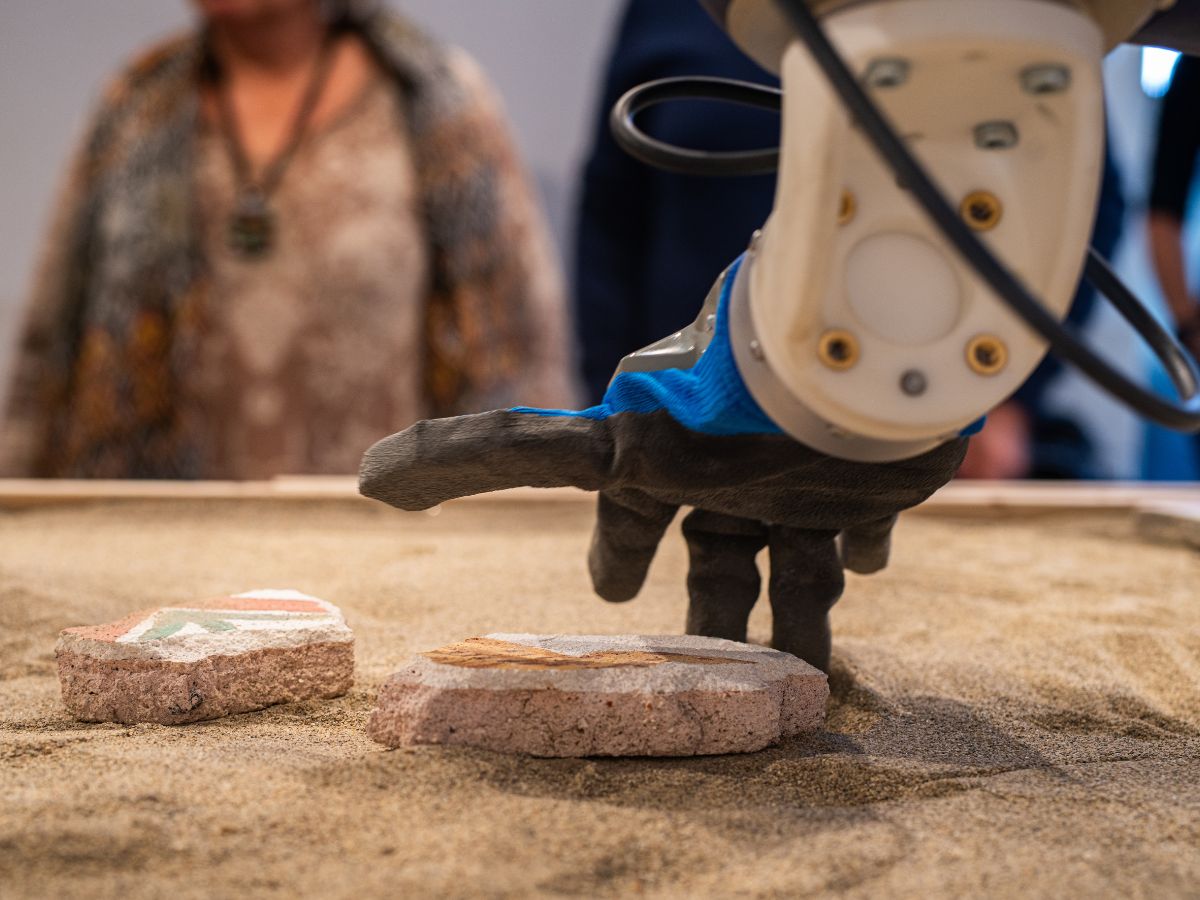Digitisation and technology solutions at the service of education, work, justice and health to keep Italy united
E-learning and teleworking: the pandemic is changing the face of work and schools in Italy, forcing the country into a fast-moving technological effort for which we were potentially not ready. The Coronvirus crisis has beaten down the resistance of the biggest sceptics of digitisation and innovation. In a few hours, hundreds of thousands of students and workers have found themselves online in front of a tablet, computer or mobile phone trying to reorganise a new daily routine. Zero hour began at the time of “lockdown”, when Prime Minister Giuseppe Conte announced that Italy was “all a red zone”, thus defining a new beginning for everyone, with the crucial contribution of technology in our lives.We asked the Director of Information and Communication Technology of IIT, Stefano Bencetti what IIT is doing and how, and whether, in his opinion, Covid-19 can change the face of digitisation in Italy.Hi Stefano, how are you first of all and how is your family? Good, fortunately we’re all okay. We’re taking the call #IStayatHome very seriously. I continue to work online connected to my colleagues. My wife, who teaches maths, spends the day preparing video lessions for her pupils and coordinating with other teachers. My son follows the online lessons of his secondary school class and my daughter, an offsite university student, fortunately managed to come back home before the lockdown started and is preparing for an exam. We obviously consider ourselves to be super-fortunate and our thoughts are continuously with those who are on the front line, to those fighting the invisible to save human lives. We continuously reflect on this aspect within the family.IIT has, for some time, implemented teleworking measures to improve the work-life balance of its staff. All this was possible thanks to technology. Can you tell us what needs to be organised, from a technological point of view, to allow an institute such as IIT to continue its scientific and administrative activities?The Italian Institute of Technology provides IT services to its staff, on the Cloud and on the intranet – namely, services that can only be accessed if connected to the data network of the Genoa site. No specific type of measure is required for Cloud services, besides personal login credentials, and accessibility is guaranteed from any workstation connected to the internet, and therefore also from home. The Office 365 platform comes to mind which makes the most common Office applications available online and which includes the new collaboration platform, Microsoft Teams. The latter, for example, in addition to providing video-conferencing and chat functionalities, provides an environment for the sharing and review of documents which can clearly be used also in multiple laboratory set-ups for research activities. Intranet services are instead only present in the Genoa headquarters. The Virtual Private Networking (VPN) service has been available since the IIT laboratories’ inception. This service also makes it possible to access in-house computer services, the servers and all the IIT tools from outside the IIT network, creating a dedicated and encrypted connection channel. This functionality has always been sought as a real need, both due to the substantial mobility of our researchers who have several international collaborations and are accustomed to frequent trips, and due to the network of IIT research centres distributed throughout Italy necessitating this mode of connection to access the Genoa network. All our employees are obviously equipped with laptops. We do not have desktop computers. Agile working and e-learning are possible realities within IIT and within other companies in the Ligurian and national territory, but not in all companies. In your opinion, which aspects are still lacking in the country and what will we need to invest in to find ourselves more ready during the next, hopefully remote, crisis?If there is one positive aspect of this pandemic, it is the stimulus that all Italians have received to increase their level of digitisation making “a virtue out of necessity”. Italy is lagging behind in all the latest global and European rankings concerning a country’s level of digital maturity. Last for digital performance, for example, in the ranking drawn up by the European Commission for 2019 which sees our country at the bottom of the ranking for the implementation of the digital agenda, in various sectors of connectivity, human capital, use of internet services, digital technologies in business and use of digital public services (cf. DESI 2019 – The Digital Economy and Society Index https://ec.europa.eu/digital-single-market/en/desi). We have a problem of broadband connectivity infrastructures and particularly the percentage of territory covered, but also a problem of the population’s digital culture, a problem with the number of graduates in Information Sciences (Computer Science, but I still like to call it the old way because it helps to emphasise that it is a university discipline!) and the offer of work in computer science is not covered by a sufficient number of resources. It would be necessary to create a virtuous circle whereby all these negative aspects can take a positive trend, and we hope that this crisis is the right occasion. Today, it is reassuring that as Italians we are reacting very well: from schools to companies, even all those who were previously incredibly sceptical of digitisation had to change their opinion and batten down the hatches, undoubtedly pushed by the country’s typical strong spirit of picking itself up and by the disruptive crisis; for that which may be my poor visibility of the situations that surround me, the results are there. Certainly, we feel the lack of digital maturity which I referred to earlier in a more pronounced manner. Everyone is trying to bridge the digital divide with the utmost commitment and with the means they possess. The effort is commendable, I don’t want to seem trivial or offensive, but we cannot expect everything to function like “a Swiss watch” for which, for example, if we consider our children who are these days following online lessons from home, it could happen that different platforms are used within the same class, such as Google hangouts, Microsoft Teams and Skype depending on the lesson and the teacher. This is because initiatives are born from the capacity of the individual educational entities to be able to organise themselves despite the limited resources they have at their disposal. Not only that, even in the best cases of the most virtuous school communities, the problem of the families’ digitisation effectively exists. In an inclusive analogue school, the possibility of “reaching” all the children is suffering. However, there is no evidence that a digital school these days has all the means for children to follow a video lesson. Therefore, it is not said that teachers are managing to deliver lessons to everyone. There are definitely families who, in this period, risk lagging behind and this is a very serious aspect. It will be necessary to create a system, to gather the excellent individual initiatives and increase the digital maturity of the entire country. Some fear that technology can rise above human capital and leave those companies that are not ready for digital initiatives in the sidelines. In your opinion, is coexistence possible and what solutions can be suggested?I would imagine that coexistence is possible, seeking to manage technology and not letting ourselves be overwhelmed. Alongside the valuable contribution of technology and the ability to enable new experiences, a “new” aspect is the enormous overload which we are now subjected to, a continuous digital bombardment that can even be wearying, with an amount of stimuli markedly higher than before: technology is creating several good opportunities and at the same time, we should know how to regulate it to cut out a space in our lives that is also non-digital.A digital project that is producing results is underway in Europe and in our country, but Italy needs a change of pace to scale the rankings I referred to earlier. It is certainly necessary to increase investment, increase awareness and the digitisation skills of citizens, but strong and clear action is needed to perhaps ensure less autonomy in obtaining a lower spread of investment and to create a more homogeneous and interoperable digital country model; in my experience, when it comes to projects that concern “people, processes and technological products,” autonomy in the development of projects is higher; higher still is the probability of creating silos that do not interoperate and do not integrate with each other and with the surrounding system. As often happens, the massive introduction of new technologies in any field initially sees a kind of assault on the diligence to try, by some, to grab the free market, or by others, to create their own tailor-made solution. The electronic register in schools could be an example where there is an initiative that responds to a need for digitisation at the basis, but the results are not as expected. It is, in fact, possible to have 3 children at home with 3 registers created by 3 different administrators because each school was able to choose a different one. To give another example, each Local Health Authority has clinical records that do not communicate with each other. Italy needs to follow the electronic invoicing model, a virtuous example where the process, workflow and constraints in technological formats are decided centrally, and then a market is also developed on the basis of this.





